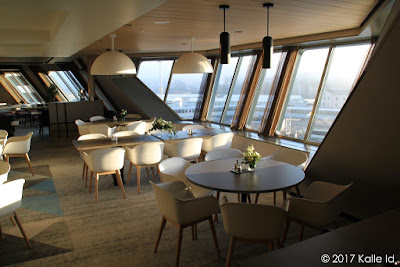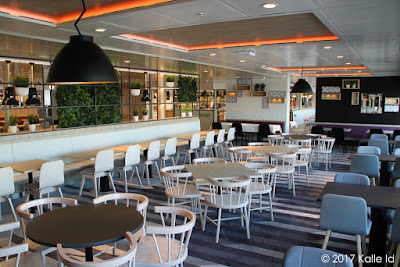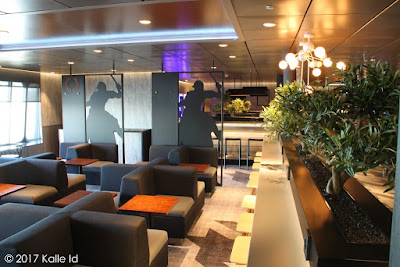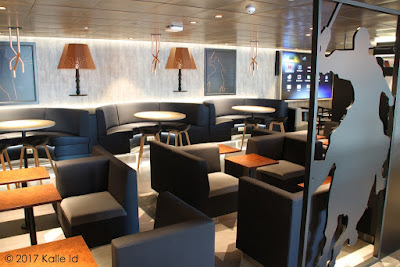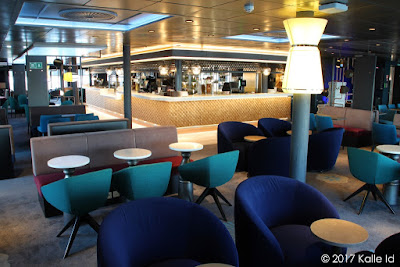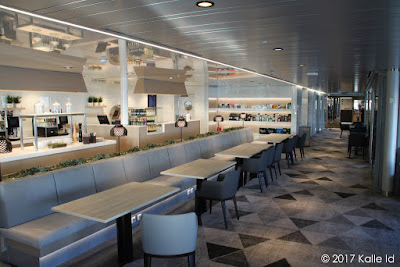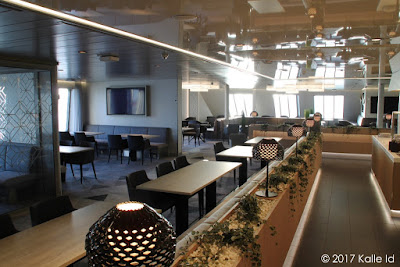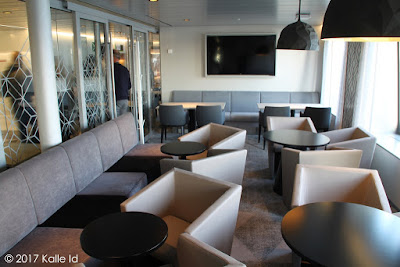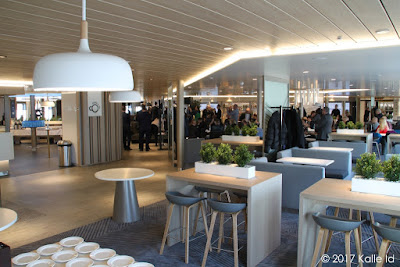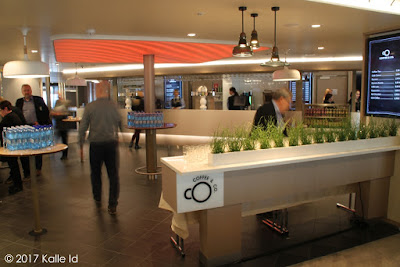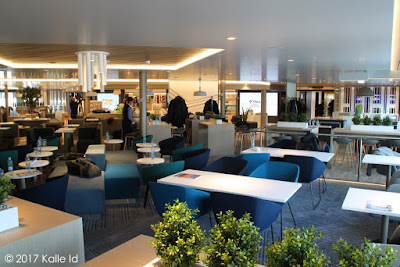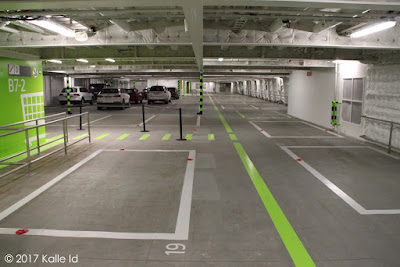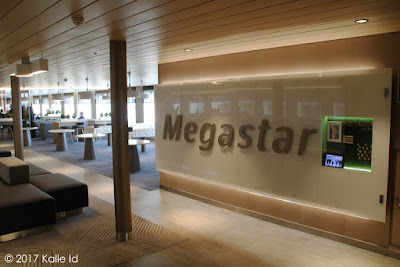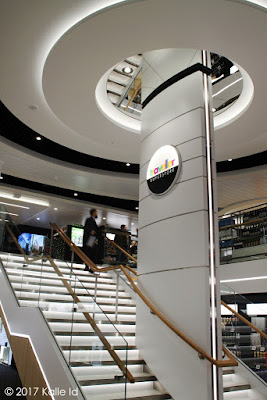Today's entry is brought to you by my discovering a previously unposted set of shots of the
Viking Grace and
Amorella in Mariehamn a few years back while working on today's issue of
Ulkomatala (which, if you speak Finnish, you should totally check out). Featuring these two ships will also handily give me a chance to write about Viking Line's memorandum of agreement for the
Amorella's replacement. But first, few words about this blog.
In the past month or so, inaddition to learning quite a lot about how to care for a newborn baby, I've also discovered how to maximise the number of blog views. Contrary to what I previously thought, the key is not regular updates. The key is making one entry a month about the interiors of the
Silja Europa. December 2016's visitor numbers smashed the previous record by more than 50 percent, and while the Silja Europa interior entries have been the newest on the blog, daily visitor numbers have regularly been double or triple the normal numbers. It will be interesting to see what will happen after this entry is posted. Which brings us nicely back to the point.
Viking Grace
IMO 9606900
Built 2013, STX Europe Turku, Finland
Tonnage 57 700 GT
Length 218,60 m
Width 31,80 m
Draught 6,80 m
Ice class 1 A Super
2 800 passengers
2 876 berths
530 lane metres of cars
1 275 lane metres of cargo
4 Wärtsilä dual fuel (LNG/diesel) engines, combined 30 400 kW
2 fixed-pitch propellers
2 bow thrusters
1 stern thruster
Service speed 21,8 knots
Maximum speed 25,6 knots
Amorella
IMO 8601915
Built 1988, Brodogradiliste Split, Yugoslavia
Tonnage 35 384 GT
Length 169,40 m
Width 27,60 m
Draught 6,35 m
2 480 passengers
2 046 berths
350 cars
900 lane metres
4 Wärtsilä-Pielstick diesels, combined 23 760 kW
2 propellers
2 bow thrusters
Speed 21,5 knots
The
Amorella and
Viking Grace have both enjoyed fairly uneventful careers, by the virtue of having both sailed (near-)exclusively on the Turku-Stockholm route (the
Amorella has also had short stints on the Helsinki-Stockholm line). An end is in sight for the
Amorella's time on the service, however, as Viking Line signed a memorandum of agreement to build a new ship for the Turku route - previously reported to be the
Amorella's replacement - in November with the Xiamen Shipbuilding Industry Co. Ltd. in China. If the new ship is realised, she will be the largest on the Northern Baltic, with a projected gross tonnage of circa 63 000; this will be achieved by making the ship circa three metres wider than the
Viking Grace, allowing the addition of one more lane of cargo on a ship with the same length.
The newbuilding is slated for delivery in 2020, and according to an interview with Viking's CEO Jan Hanses, on being replaced the
Amorella will move to the Helsinki-Tallinn line as a running mate for the
Viking XPRS. Also according to Hanses, Viking have been scouting the second-hand market for a suitable Helsinki-Tallinn ship for some time, without success. (This does, however, beg the question if it was smart to sell the
Isabella back in 2013, if less than four years later Viking are in dire need of an additional ship).
The to-be-confirmed contract for the Chinese newbuilding also includes the option of a sister ship. If Viking are pleased with the new ship, surely the sensible thing would be to use the option and operate the Turku route with two identical sisters. This would also free the
Viking Grace for use on other routes - rumours about transferring her to Helsinki-Stockholm have occasionally circulated. Of course, anything related to the optional sister is pure speculation.
The photos below, meanwhile, show the
Viking Grace and
Amorella arriving at Mariehamn for their simultaneous afternoon call, allowing for passengers to and from the Åland islands to disembark/embark, but - more importantly - allowing people making a 'picnic cruise' from Turku or Stockholm to change ships. Photographed from Västra Ytternäs, if I remember correctly. As always, click on the images to see them in larger size.
 |
| The weather and lighting were far from perfect - I fiddled with these quite a lot to make them less grey - but the synchronised arrival and turning is rather neat. |
 |
| Interesting to compare the ship's looks; the same company, designed for the same route, but 25 years between them. |
 |
| The dance of the (not so) little ferries. |
Kships will return at latest at the end of this month with photos of the brand-new
Megastar.
